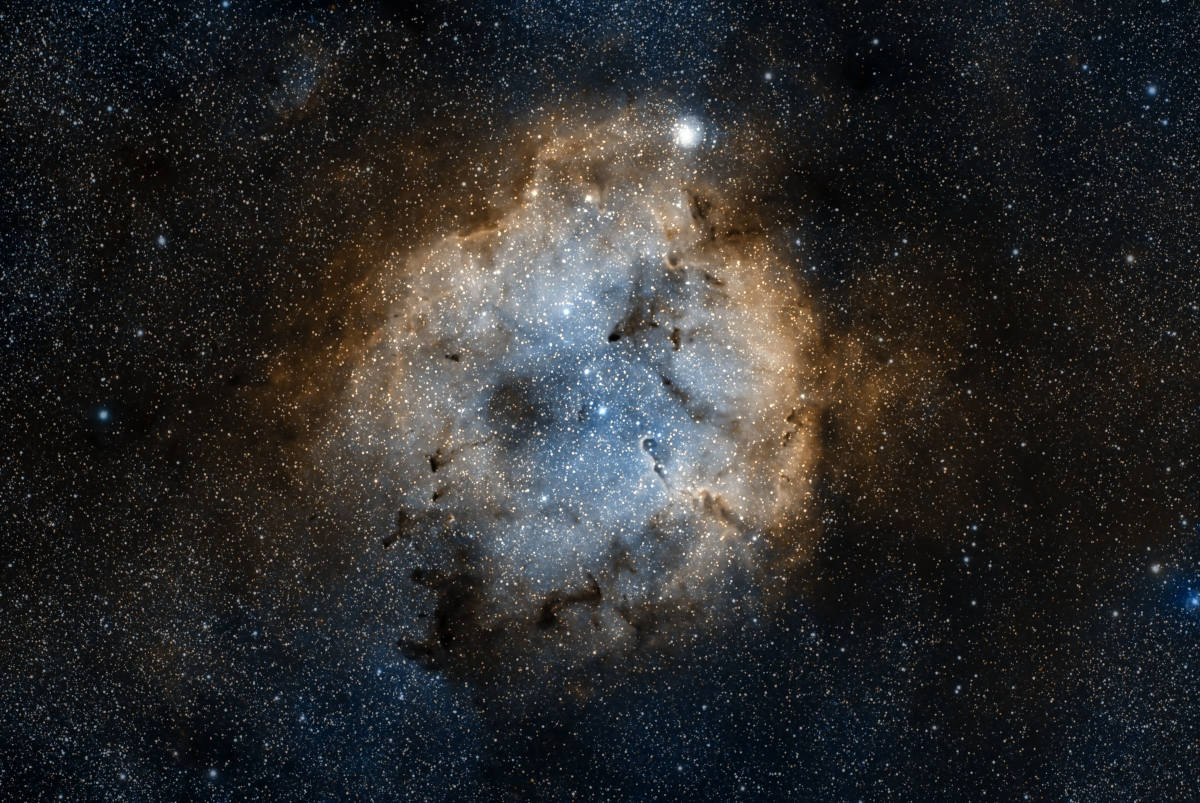
Integration time:
* 291 x 120s (9h42m)
Notes
16th September 2022 Whilst monitoring the observatory imaging this evening I had the chance to process the Elephant’s Trunk Nebula from last month. Processed as SHO from an OSC image.
'Sing to the Moon and the stars will shine'

Integration time:
* 291 x 120s (9h42m)
16th September 2022 Whilst monitoring the observatory imaging this evening I had the chance to process the Elephant’s Trunk Nebula from last month. Processed as SHO from an OSC image.
Trip in September to Mid-Wales Bortle class 3
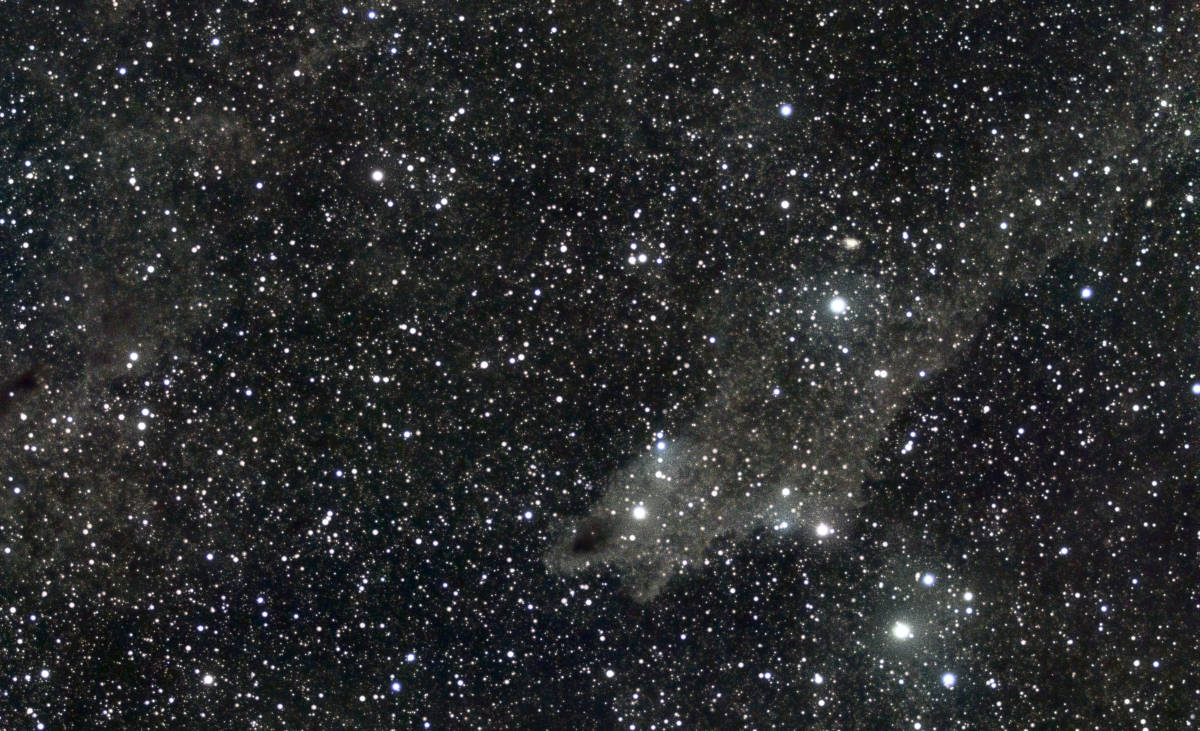
11th September 2022 Evidently far more integration time is needed the the meagre 2h48m I managed to salvage from the trip. Still, this makes a reasonable start and allows some improved framing choices to be made for the next attempt on this target. I also think that the stars would benefit from the use of the Astronomik L3 filter to reduce star bloat.
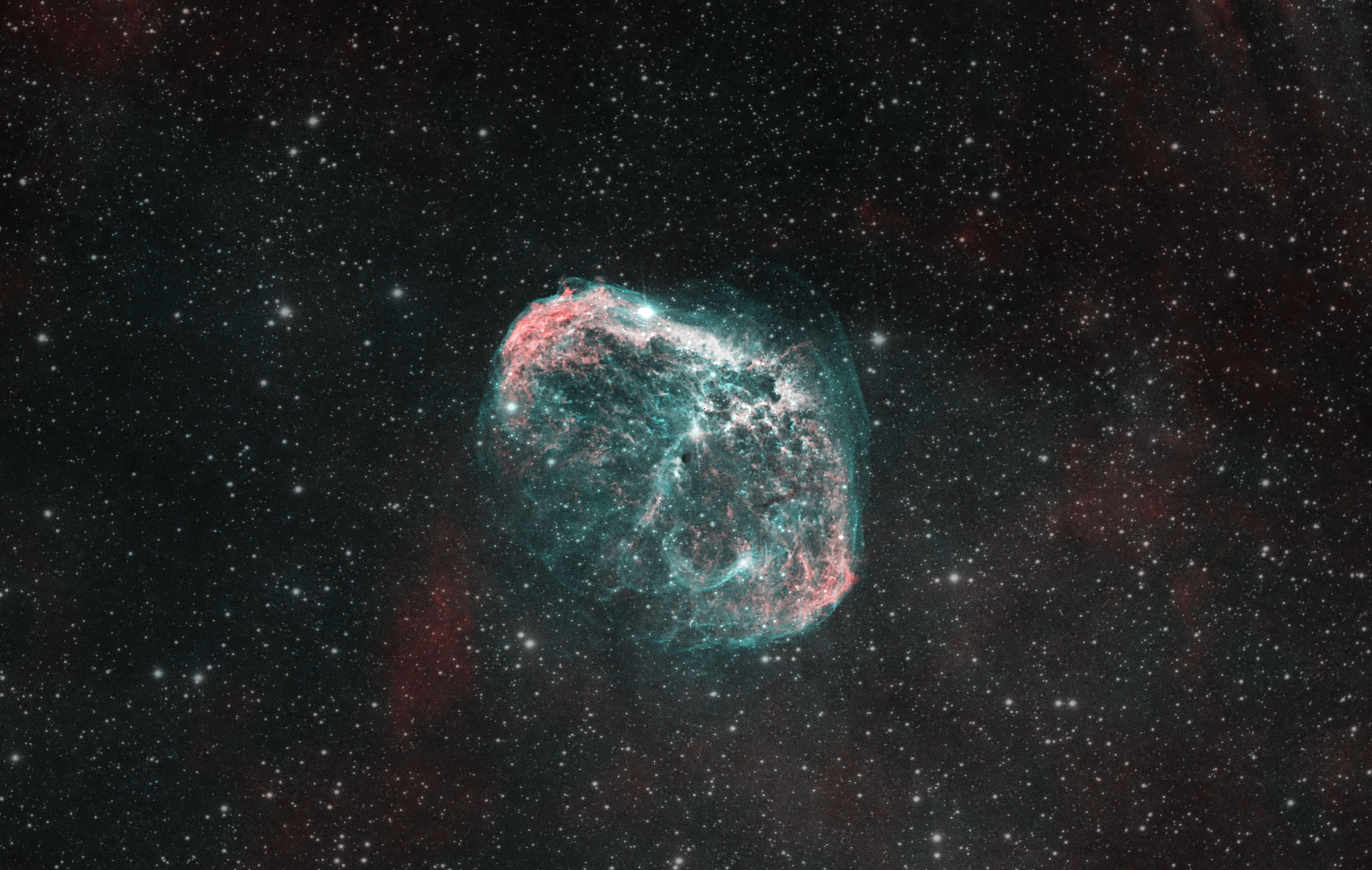
Integration time:
* SII 38 x 300s (190m)
* Ha 50 x 300s (465m)
* OIII 134 x 300s (670m)
* Total: 1325m/22h05m
9th August 2022 Gathered more Ha data to take total integratime time over 20 hours. Only two dropped frames on a night of varying transprency where I nearly closed the observatory prior to imaging because of the amount of approaching cloud. I decided to let it run and let NINA handle re-centring etc should it be required. Now ready for processing.
12th August 2022 With two imaging rigs up and running I had the fortune of a Friday evening, clear and warm on the night of the Perseid meteor shower peak (ZHR 80). Few meteors were seen as the full was full tonight but Jupiter, Saturn and the Moon were resplendent. The newly acquired cassegrain telescope (F12, 6", 1836mm focal length) performed wonderfully.
The two nebulae - Heart and Soul - in widefield
Integration time:
* 111 x 120s (3h42m)
* Total: 3h22m
13th August 2022 A small number of frames gathered before clouds rolled in once more.
The new wide field target for the current period of good weather is NGC7822 / SH2-171, an HII region in Cepheus.
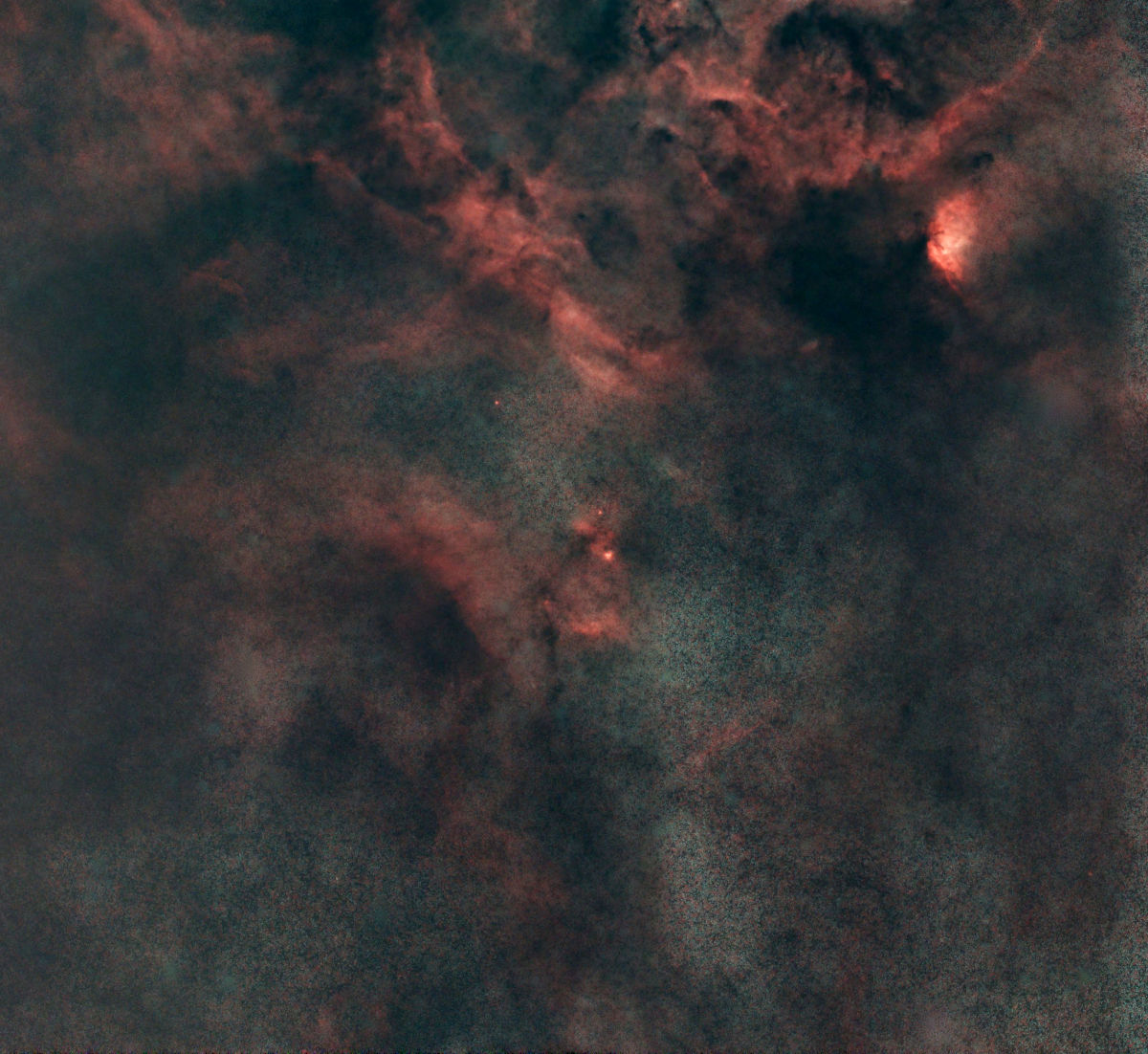
Integration time:
* 165 x 120s (5h30m)
10th August 2022 Five and a half hours of data gathered last night. Compared to previous targets the nebulosity of NGC7822 is quite faint.
Integration time:
* 319 x 120s
* Total (10h38m)
8th August 2022
Another five hours’ + data gathered on a new target in Cygnus.
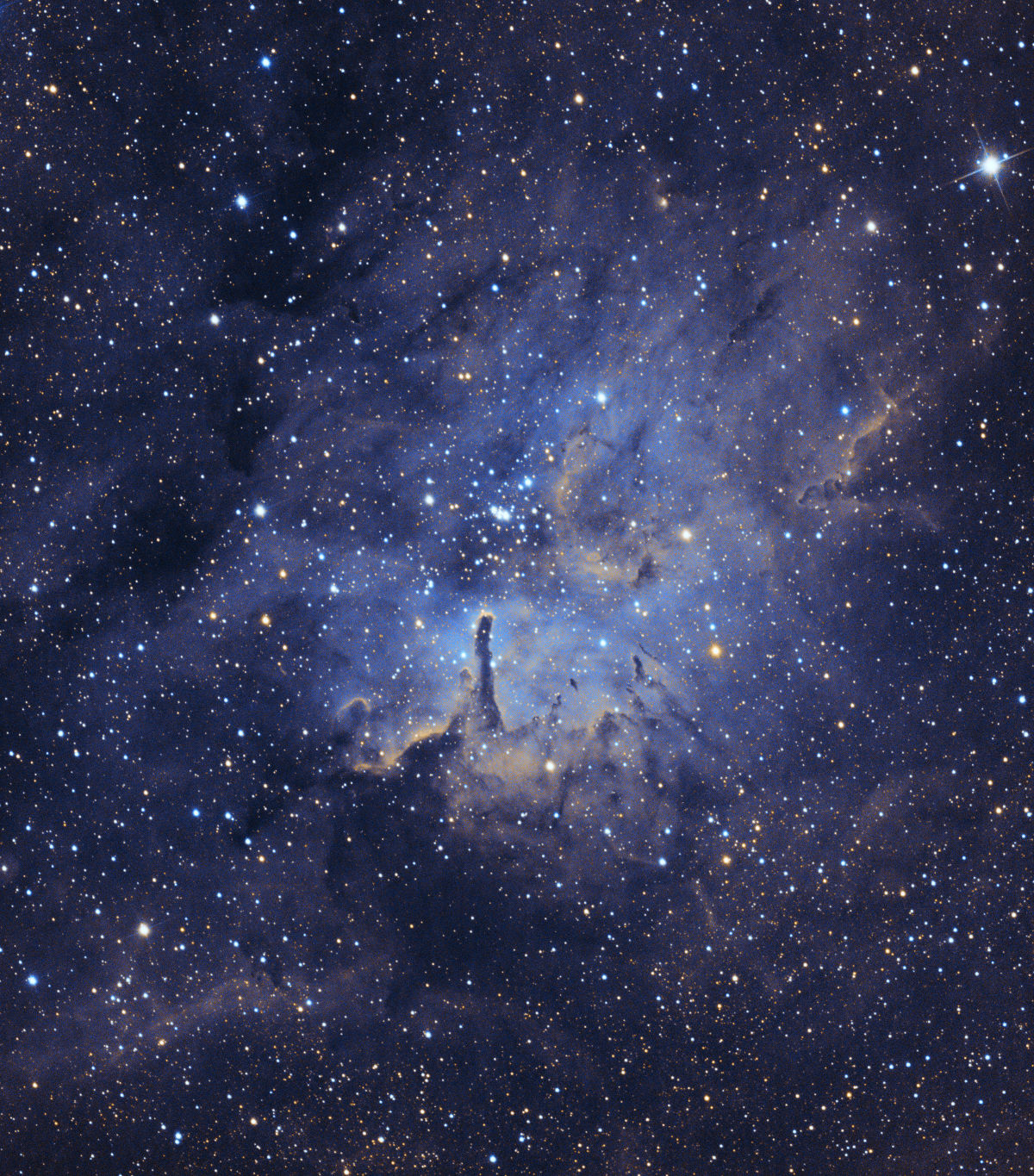
Integration time (running total):
* SII 25 x 300s (205m)
* Ha 21 x 300s (175m)
* OIII 23 x 300s (200m)
* Total: 855m/14h15m
Integration time target
* Target: 20 hours
* Progress: 71%
From latitude 52° North this target is at it optimum altitude now and will continue to be available for several hours per evening well into the darker nights of autumn.
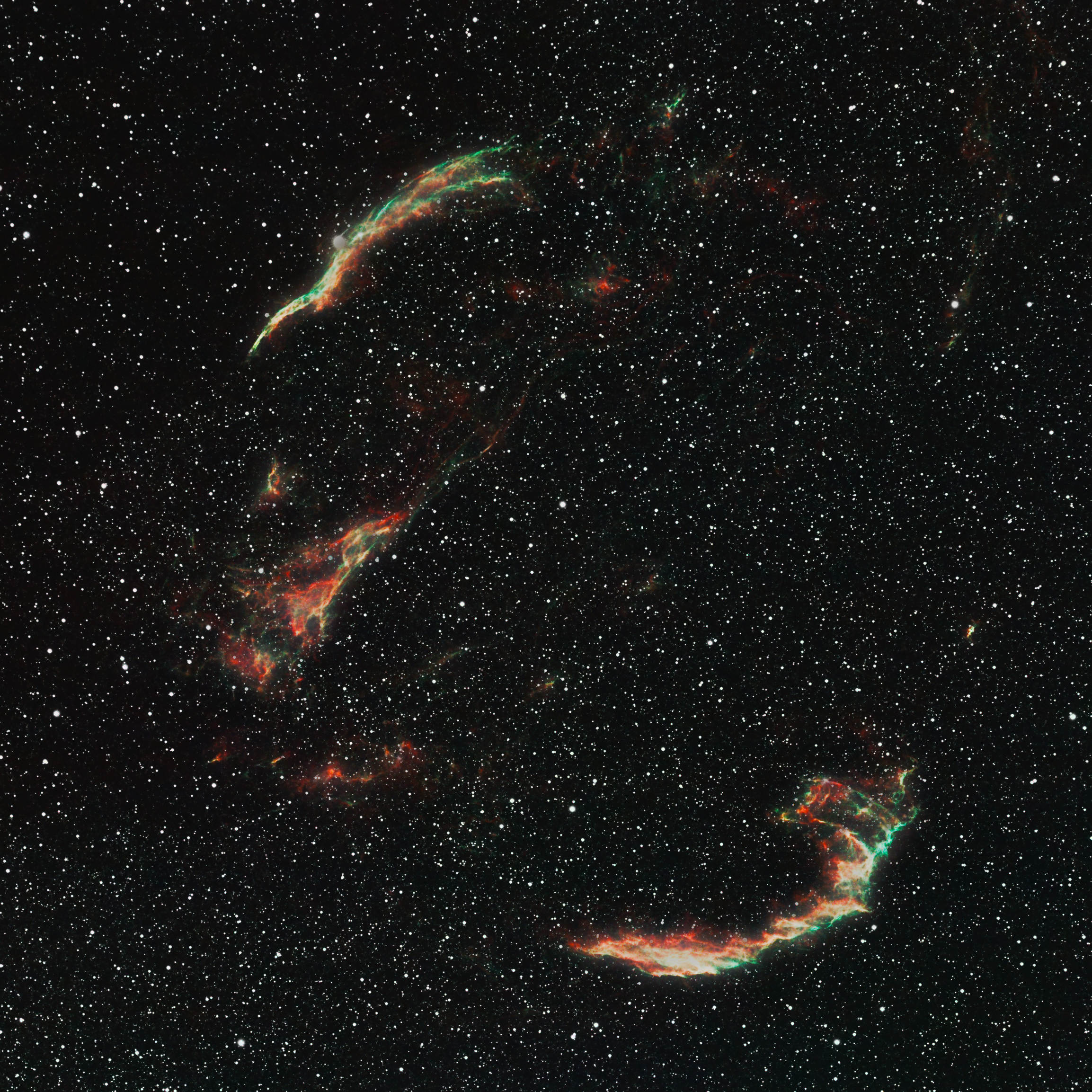
10th July 2022 In the end it took five hours to stack the subs! The end result was good though.
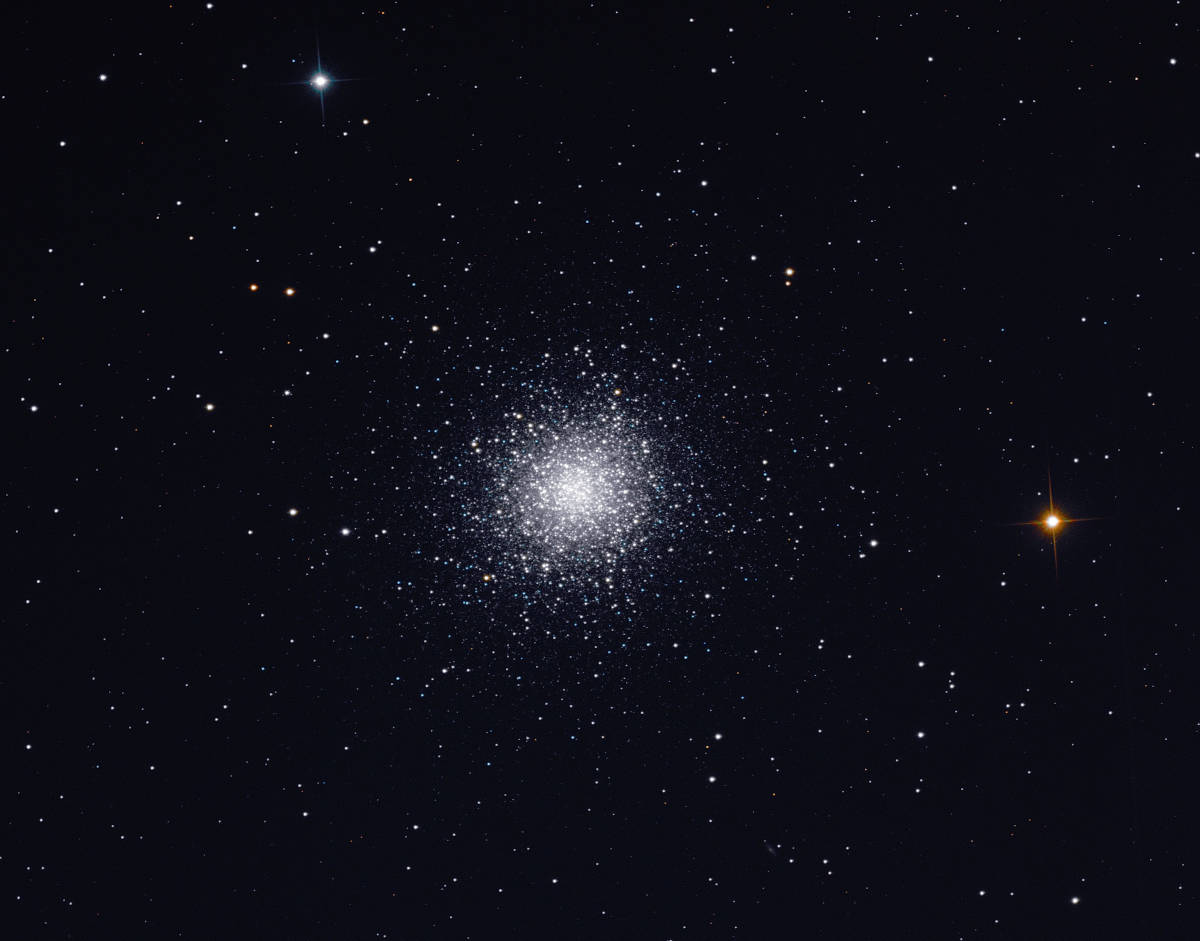
7th July 2022 First test of the GHS (Generalised Hyperbolic Stretch) script in PixInsight which I found intuitive (for a PI script!) and mighty impressive in its results. Definitely one to keep using and get good at. This resulting image is a massive improvement on the same target photographed last year due to this and, mainly, the EQ6R Pro mounted on a pier.
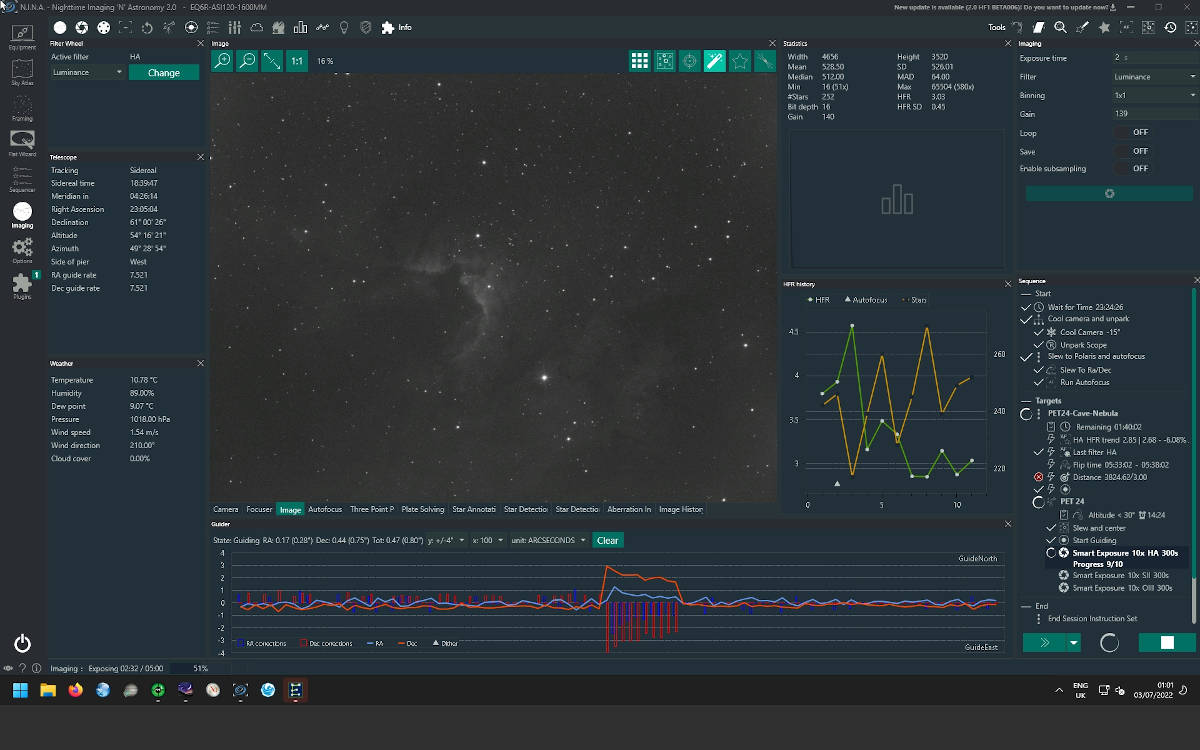
2nd July 2022 I ran the 200PDS on the Cave Nebula in narrowband and the Askar on the Cygnius Loop in OSC. Amazingly my tweaks to the AZ-GTI mount seem to have made the guiding work and although the guiding standard deviation was horrible the result was very tight round stars on the Askar. The guiding on the Newtonian was awful too and I think that the extreme humidity was affecting the seeing quite badly.